Best
Pre-Shaped
Shoulder Rest
-
Overall: Made with a 3D computer-modelled design
-
Best Feature: High-grade ABS material for extra strength and flexibility
-
TedScore™: 7/10
Best
Flexible Shoulder
Rest
-
Overall: Embodies Kun's vision of the most ergonomically correct shoulder rest
-
Best Feature: Enjoy durability and comfort with a thermoplastic frame and a soft sponge rubber pad
-
TedScore™: 9/10
Best
Pad & Cushion Shoulder Rest
-
Overall: Pliable metal base for a customizable fit
-
Best Feature: Hook can be moved to provide anchorage at preferred playing position
-
TedScore™: 8/10
Are you a beginner violin player struggling to put on your violin shoulder rest? Don’t worry. You’re not alone!
Many beginners find putting on a shoulder rest tricky and challenging, but it’s essential to playing the violin. In this article, we’ll guide you how to put on a violin shoulder rest, so you can play comfortably and easily.
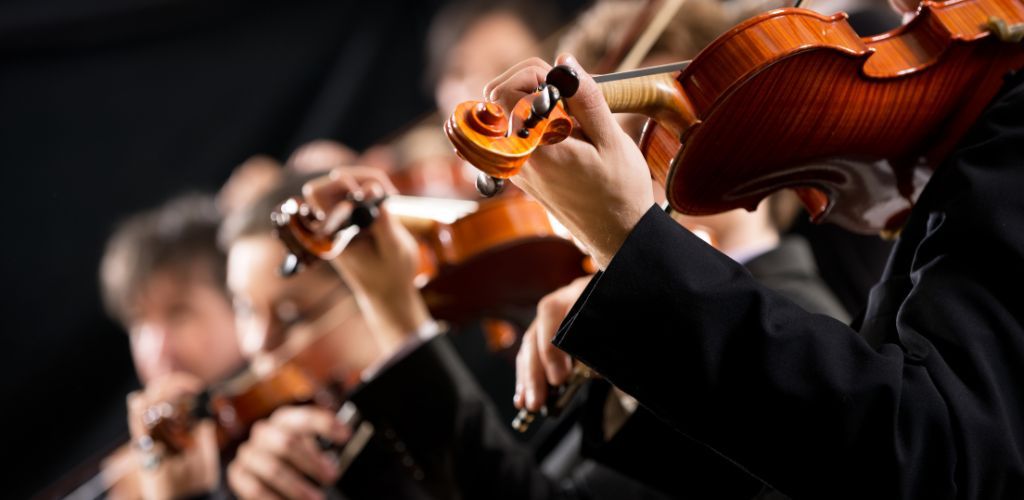
Before we discuss how to put on a shoulder rest, it’s essential to understand why it’s necessary. The shoulder rest supports the violin on your left shoulder, making it easier to hold the instrument while playing.
So, to play the violin comfortably and produce beautiful, satisfying sounds, you must learn to put on a shoulder rest and sit properly.
A Short History of
Shoulder Rests

If you’re a violin player, you know that playing the violin can be quite challenging, especially when keeping the instrument steady. The use of a shoulder rest can help alleviate this issue.
But where did the shoulder rest come from?
The history of the shoulder rest dates back to the early 19th century. Before the shoulder rest, violinists used to play without any support for their instruments.
However, as violin playing techniques advanced, players began to feel comfortable with experimenting with different ways to hold their instruments.
One of the earliest forms of shoulder rest was based on a simple piece of cloth or sponge placed under the violin to provide cushioning.
In the early 20th century, violinist Louis Spohr introduced a metal shoulder rest attached to the violin. Violinist Willy Wolf later improved upon this design in the 1930s. Wolf’s design was adjustable, allowing for greater comfort and stability while playing.
Today, many types of shoulder rests are available, from traditional wooden ones to more modern designs made of plastic or foam.
Some even come with air cushions for added comfort. The choice of which shoulder rest to use ultimately depends on personal preference.
Types of
Violin Shoulder Rests
When choosing a violin shoulder rest, several types are available to suit different playing styles and preferences.
In this section, we’ll look at three common types of violin shoulder rests: pre-shaped pad shoulder rests, flexible metal shoulder rests, and pad & cushion violin shoulder rests.
This type of shoulder rests are adjustable in height and angle but have a pre-shaped ergonomic pad as a base. The base is mostly made out of plastic.
These shoulder rests are popular among beginners and intermediate players because they are affordable and easy to use.
They come in different shapes and sizes to fit various shoulder shapes and sizes.
Flexible metal shoulder rests are made of a metal frame with adjustable legs that can be bent to fit the shape of your shoulder.
They’re ideal for players who prefer a more customized fit. The metal frame is usually covered with foam or rubber for added comfort.
These shoulder rests are more expensive than pre-shaped pad shoulder rests, but they offer greater flexibility and adjustability.
Pad & cushion violin shoulder rests are made of a foam or cushioned pad that attaches to the seat or back of the violin. They’re ideal for players and students who prefer a minimalist design and do not want a shoulder rest that protrudes from the instrument.
These shoulder rests are affordable and easy to use, but they may not provide enough support for players with larger shoulders.

Pros and Cons of Playing With a Shoulder Rest
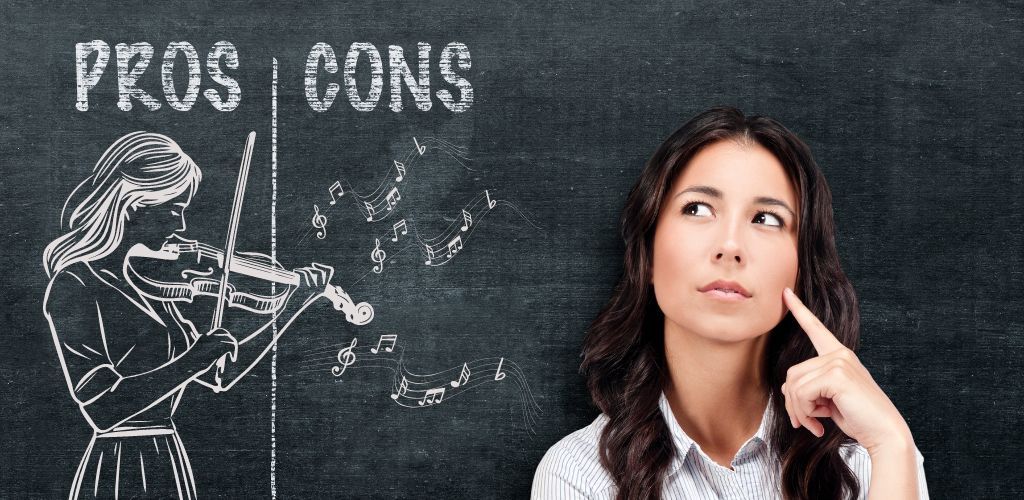
- Improved posture
- Reduced pain and discomfort
- Less risk of injury
- Less mobility
- Less control over sound
- Possible discomfort
Pros
When playing the violin, a shoulder rest can be a valuable tool. Here are some of the benefits of using a shoulder rest:
Improved posture
One of the biggest advantages of using a shoulder rest is that it can help you maintain proper posture.
A shoulder or chin rest can help keep your back straight and your head in a natural position by providing a stable platform for your violin.
Reduced pain and discomfort
Playing the violin for extended periods of time can be tough on your body, particularly your back and shoulders.
A shoulder rest can help distribute the student and instrument’s weight more evenly, in turn reducing strain and discomfort.
Less risk of injury
You may more likely develop injuries from holding the instrument awkwardly without a shoulder rest. A shoulder rest can help you maintain a more natural and comfortable playing position, reducing the risk of injury.
Cons
While there are certainly benefits to using a shoulder rest, there are also some potential drawbacks to consider:
Less mobility
Moving the violin around freely with a shoulder rest in place can be more difficult. This can limit your ability to make certain types of arm movements while playing music.
Less control over sound
Some musicians feel that a shoulder rest can interfere with their ability to produce the desired sound from their instrument. Without a shoulder rest, achieving a more personalized sound may be easier.
Possible discomfort
While a shoulder rest can help reduce discomfort for some players, others may find it awkward or cause more discomfort. It’s important to experiment with different types of shoulder and footrests to quickly find one that works well for your body and playing style.
5 Steps - How to Put a Shoulder Rest on Your Violin

Putting a shoulder rest on your violin can seem daunting, especially for beginners. However, with some practice, you can learn how to do it like a pro. Here are five easy steps to help you put on your shoulder rest easily.

First, position your violin so the neck faces down and the back faces up (with the scroll pointing down toward the floor or ground between the knees).
Hold the violin between your chest and knees to keep it secure.
This will give you better control over the longer neck of the instrument and allow you to use both hands.
Next, attach the shoulder rest to the lower section of your violin.
Hold the rest as if you imagine it’s smiling at you, and slide the feet of the shoulder rest on the sides of the violin until you’re sure it’s secured.
Ensure the shoulder rest is positioned correctly and the feet are not touching the strings.
Once the shoulder rest is attached, adjust its position to fit your body. You can move the rest up or down until the pad touches your collarbone.
This will make playing more comfortable and help you maintain the correct posture.
Test the fit of the shoulder rest by playing a few notes. Ensure the shoulder rest fits securely and it’s not slipping or moving around.
If it feels uncomfortable or unstable, adjust the position until it feels right.
To remove the shoulder rest, reverse the steps.
Hold the violin between your knees, remove the tip and the feet edge of the shoulder rest from the sides of the violin, and gently lift the rest of the instrument.
Store the shoulder rest safely until you’re ready to use it again.
Highly Recommended Shoulder Rests To Buy
Pre-shaped Shoulder Rest
Everest EZ-4A Violin Shoulder Rest
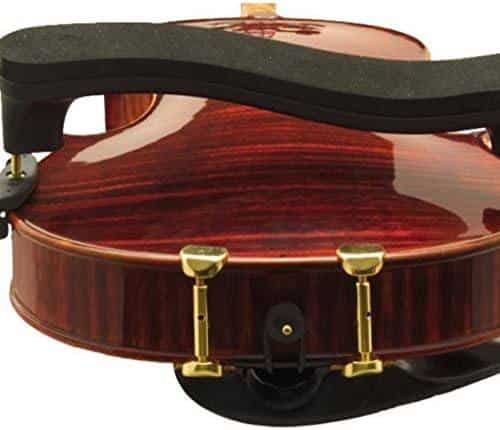
FEATURES: Made with a 3D computer-modelled design
OTHER INFO: High-grade ABS material for extra strength and flexibility
- Ergonomically engineered fixed tilt with adjustable width and height for increased curvature and comfort
- Grippy feet keep the rest firmly in place and prevent slipping
- Sturdy and virtually unbreakable, making it a durable choice for players of all levels
- A much more affordable option compared to other brands of shoulder rests on the market
- The height may not adjust enough for some players, limiting customization options
- Some users may find that the grip is too tight and hinders the sound of their instrument
When you click ‘Check Price’, you’ll see there are loads of great places to buy this item. Our personal favorite is Sweetwater for the US, and Thomann and Gear4Music for the UK & Europe.
They are the largest music retailers, with excellent customer service, competitive prices, really fast shipping, and the longest guarantees.
The professional musician who wrote this article combined many things,
from the product build, manufacturer’s reputation through to feedback
from other users, to create our famous TedScore™.
WHY We Love This Pre-shaped Shoulder Rest
Pre-shaped shoulder rests are a popular choice for beginners and intermediate players. They are usually made of foam or rubber and come in various shapes and sizes to fit different violins. They are also adjustable so that you can customize the fit.
One highly-rated pre-shaped shoulder rest is the Everest EZ-4A. It’s made of high-quality foam and has a contoured shape that fits most violins. It’s also adjustable and easy to install, making it a great choice for beginners.
Flexible Shoulder Rest
Bon Musica Violin Shoulder Rest
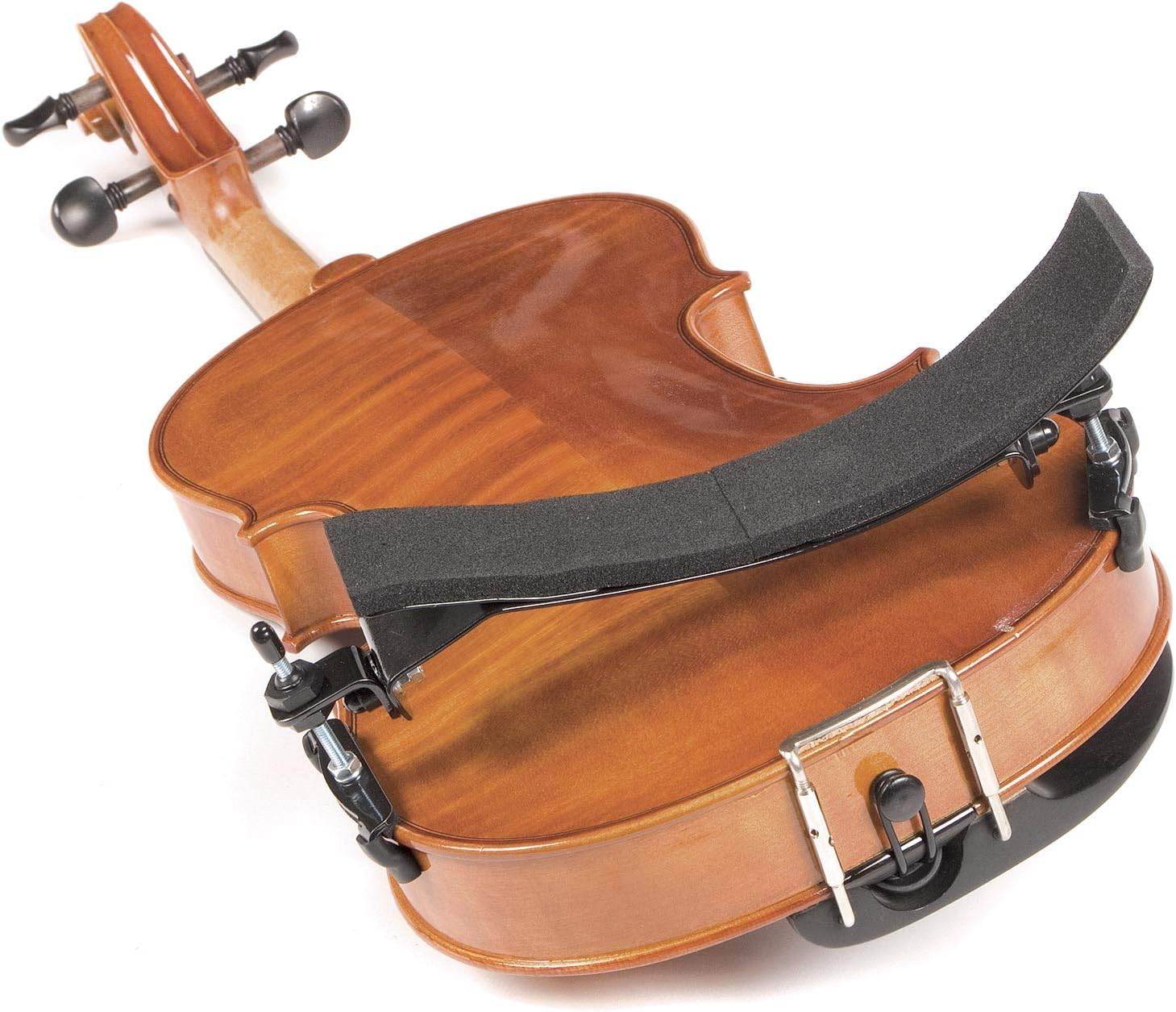
FEATURES: Pliable metal base for a customizable fit
OTHER INFO: Hook can be moved to provide anchorage at preferred playing position
- Height and tilt are adjustable in 2 planes, with a bendable plate for an infinite range of adjustment
- With the most complete and comfortable design on the market
- Can vastly improve playing position, freeing the left-hand fingers to move more freely
- May not be suitable for players with short necks, as it lifts the instrument off the shoulder and may cause discomfort
When you click ‘Check Price’, you’ll see there are loads of great places to buy this item. Our personal favorite is Sweetwater for the US, and Thomann and Gear4Music for the UK & Europe.
They are the largest music retailers, with excellent customer service, competitive prices, really fast shipping, and the longest guarantees.
The professional musician who wrote this article combined many things,
from the product build, manufacturer’s reputation through to feedback
from other users, to create our famous TedScore™.
WHY We Love This FLEXIBLE Shoulder Rest
Flexible shoulder rests are ideal for professional players who need a more customized fit. They are usually made of metal and can be bent and shaped to fit your shoulder and neck. They are also adjustable so that you can fine-tune the fit.
One highly-rated flexible shoulder rest is the Bonmusica. It’s made of durable metal and has a unique design that allows you to adjust the height and angle of the rest. It’s also padded for extra comfort, making it a great choice for long practice sessions.
Pad & Cushion Shoulder Rest
Kun Original Violin Shoulder Rest

FEATURES: Embodies Kun's vision of the most ergonomically correct shoulder rest
OTHER INFO: Enjoy durability and comfort with a thermoplastic frame and a soft sponge rubber pad
- Secure your shoulder rest with sturdy T-shaped feet
- Available in 4/4 size and 1/2-3/4 size
- The go-to shoulder rest for a comfortable hold
- Lightweight and strong
- May not fit all violin sizes
When you click ‘Check Price’, you’ll see there are loads of great places to buy this item. Our personal favorite is Sweetwater for the US, and Thomann and Gear4Music for the UK & Europe.
They are the largest music retailers, with excellent customer service, competitive prices, really fast shipping, and the longest guarantees.
The professional musician who wrote this article combined many things,
from the product build, manufacturer’s reputation through to feedback
from other users, to create our famous TedScore™.
Why We Love This Pad & Cushion Shoulder Rests
Pad and cushion shoulder rests are great for players who want extra comfort and support. They are usually made of foam or rubber and have various padding options to fit different body types. They’re also adjustable so that you can customize the fit.
One highly-rated pad and cushion shoulder rest is the Kun Original. It’s made of high-quality foam and has a contoured shape that fits most violins. It’s also adjustable and has a padded cushion for extra comfort, making it a great choice for players of all levels.
How To Put On A Violin Shoulder Rest:
A Recap
The right shoulder rest for you may take trial and error.
Don’t be afraid to experiment with different types and positions until you find what feels most comfortable and secure. It will be easy to do that now that you know how to put it on!
Always properly fit and adjust your shoulder rest before playing to avoid any discomfort or potential injury.
We hope this guide has been helpful in your journey to becoming a better violin player.
Now, go forth and continue to play confidently, knowing that your shoulder rest is securely in place and standing ready to support you.
“May your notes be in tune and your shoulder rest be secure!”
Happy playing!
Before you forget, visit our new page ‘17 Must-Have Accessories For String Players’
FAQ's
When putting a shoulder rest on your violin, it’s important to remember that all rests have a wider curved part and a thinner part. You should place the wider side of the rest on the same side of the chinrest, and if you have a center-mount chinrest, that means the wider part should be on the side of the G string. Be sure to place the violin on your lap and take the time to handle it carefully to avoid dropping it while positioning the shoulder rest.
When putting your violin and shoulder rest in a case, note that placing the shoulder rest in a spot that won’t damage the instrument is important. If your case has one, note that you can place the shoulder rest in the provided compartment on the opposite side of the chinrest or in a separate compartment to prevent any potential scratches or dents.
The general rule is that if a small space between the jawline (chin) and collar bone exists, a left shoulder or chin rest may not be necessary. However, if this space is larger than the height of the violin and chinrest, shoulder rest or elevated chinrest may provide the necessary support for a comfortable and relaxed playing posture. It’s also helpful for that long practice session.
If you’re considering using or ditching a shoulder rest, both approaches have pros and cons. Playing with a shoulder rest can provide added comfort and stability and limit your range of motion. Playing without a shoulder rest allows for greater freedom but can require more adjustment and may result in injury if not done properly.
Yes, some do. However, it’s not a requirement – it’s all about what’s relevant to the person. It ultimately comes down to personal preference and comfort. Just like any musician, professional violinists prioritize their own playing experience and will make adjustments as necessary to ensure they can perform at their best.
The shoulder rest first appeared around the middle of the 20th century and was made of various materials of wood, aluminium or plastic. It aimed to allow a more comfortable playing position by adding height to the shoulder and preventing the instrument from slipping forward.
The shoulder rest was created to make playing the violin, fiddle, or viola more comfortable by adding height to protect the shoulder and prevent the instrument from slipping. This helpful accessory allows for smoother and lighter shifting techniques, ultimately enhancing the player’s overall performance.


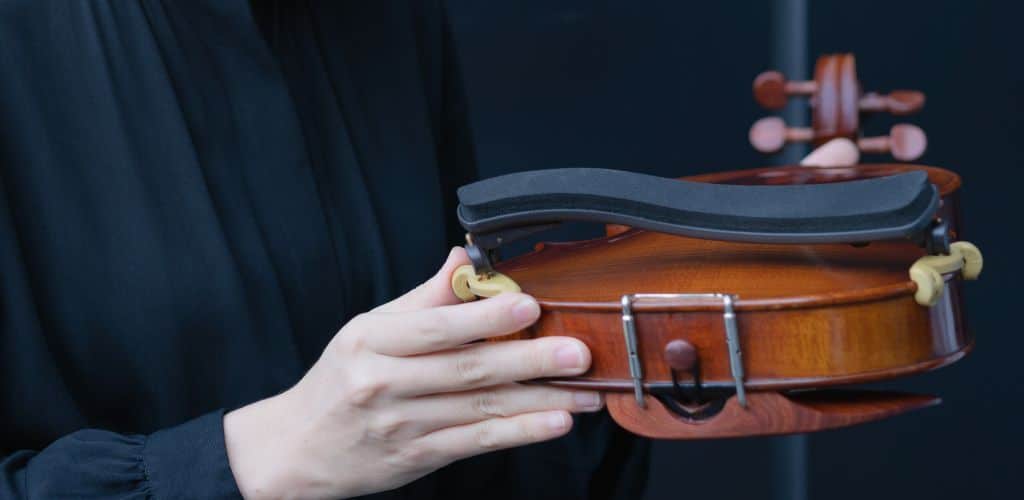
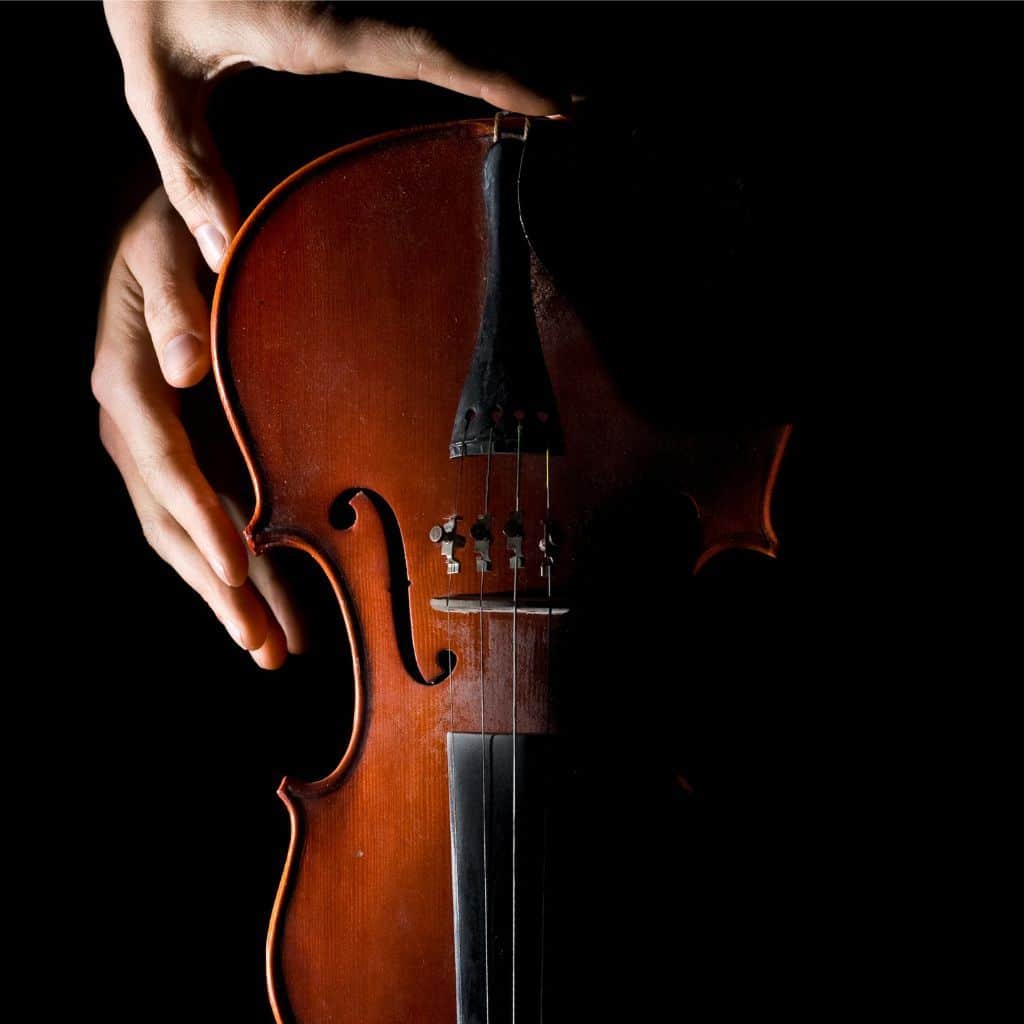
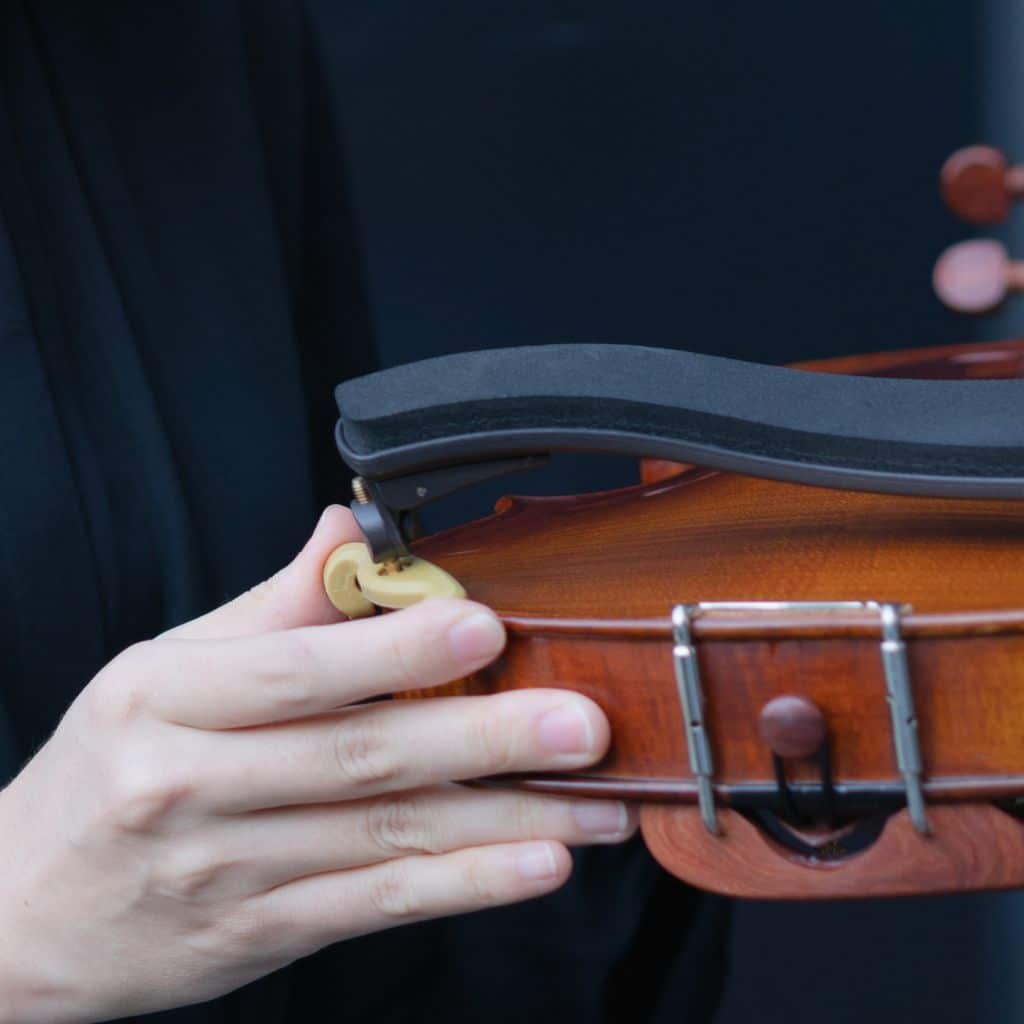
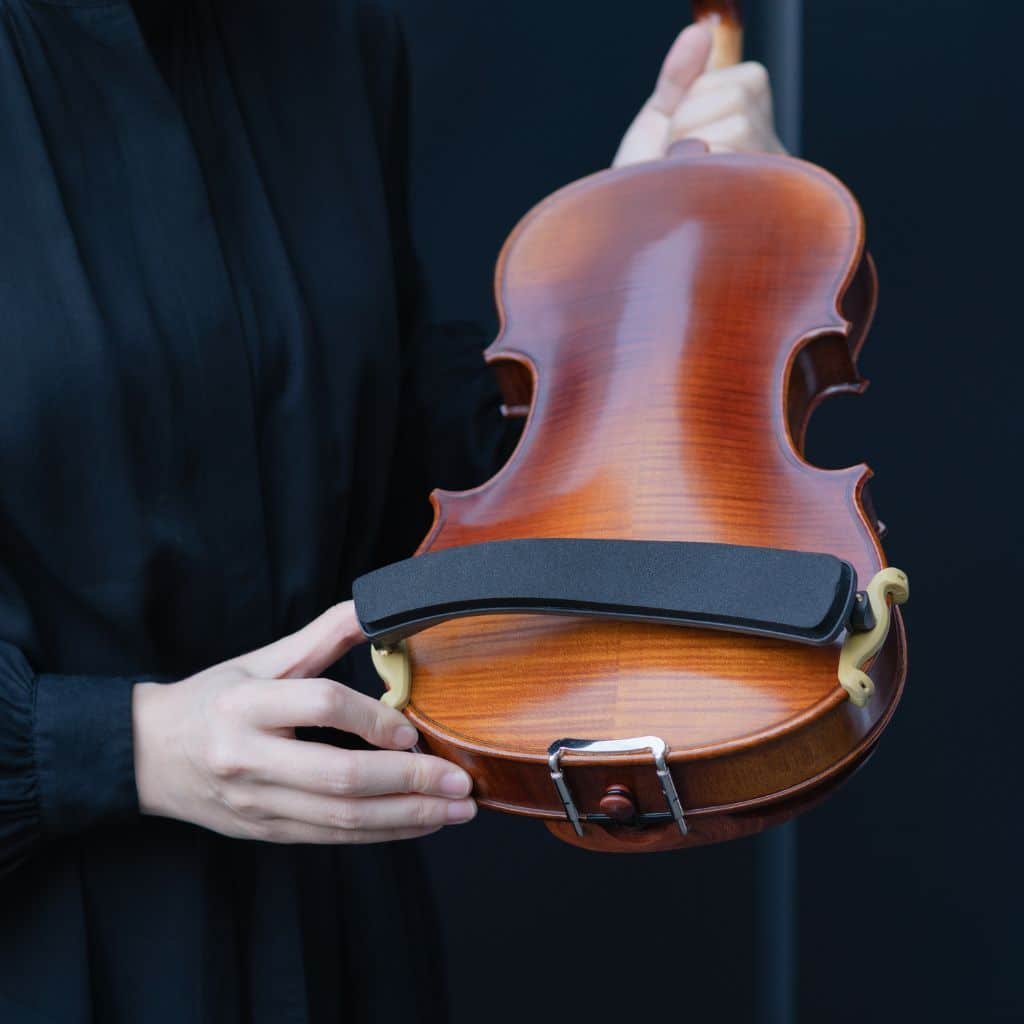
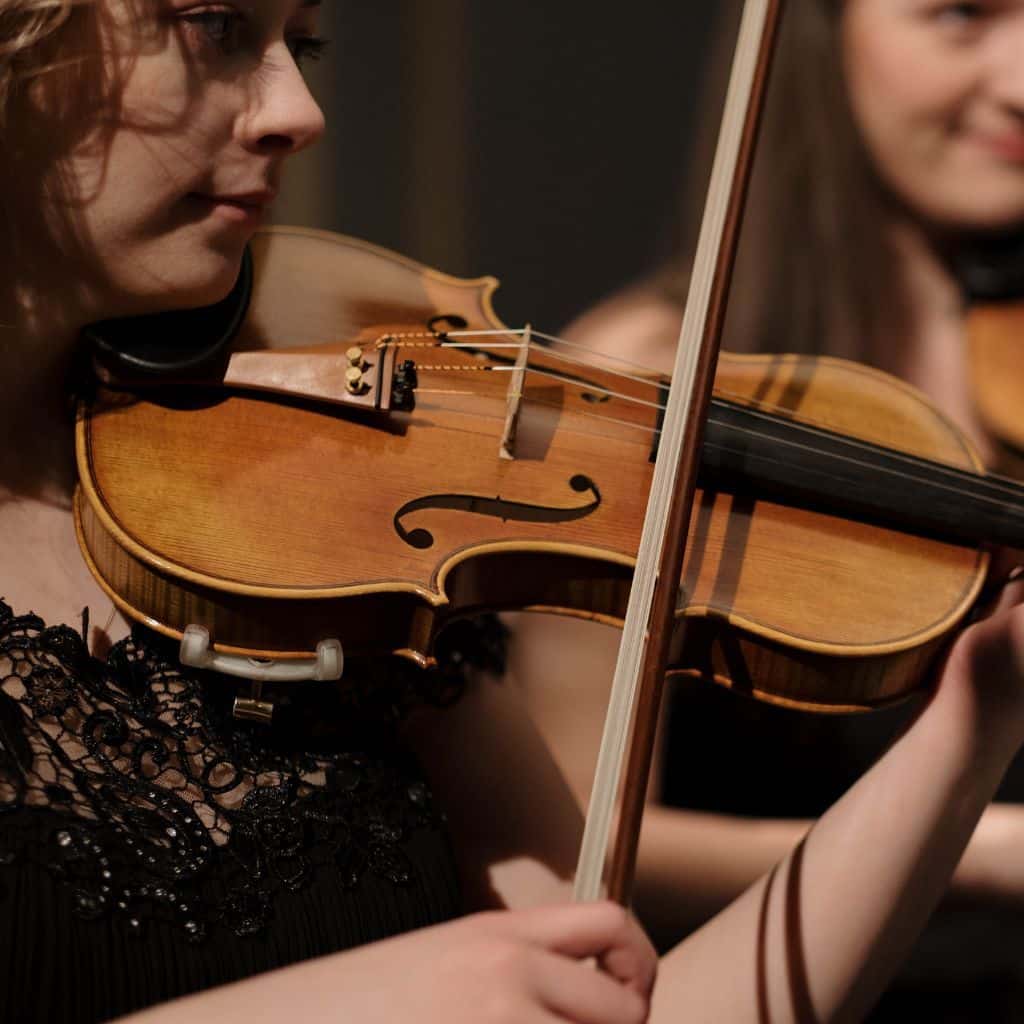
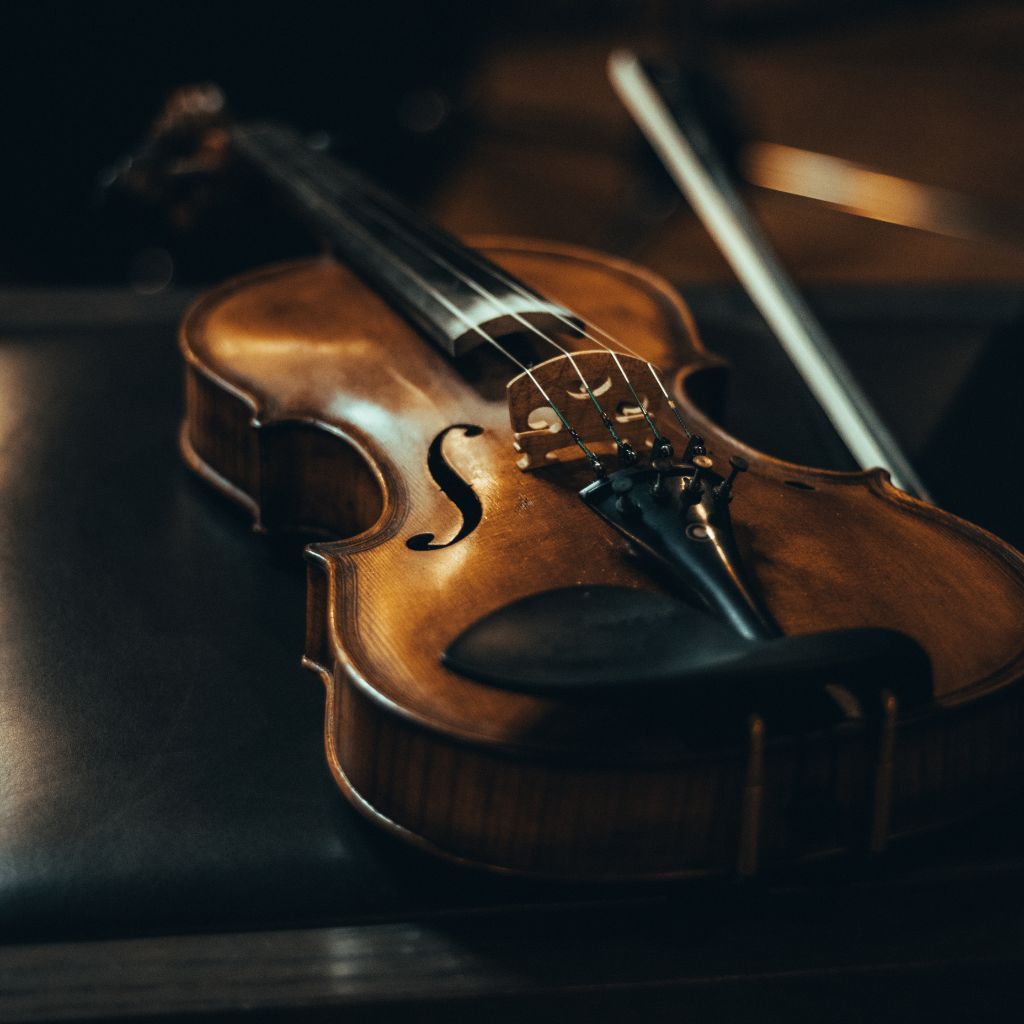







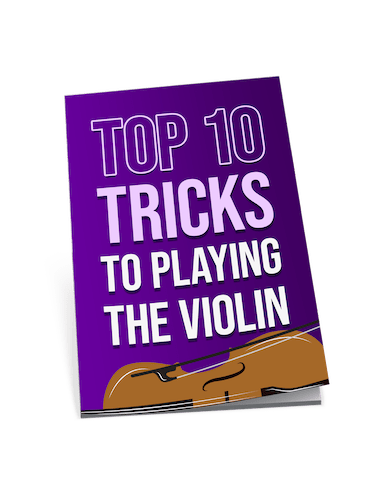
Gotta say, didn’t know there were so many types of shoulder rests available.
Reg Clews really nailed it with this guide. The part about putting on the shoulder rest? Super helpful for newbies. Kudos for putting together such a detailed guide. Will definitely recommend!
I’ve read your part about the pros and cons of playing with a shoulder rest, and I’m not entirely convinced. I’ve played without one for years and find that it actually improves my sound control. Anyone else feel this way or is it just me holding on to old habits?
Max, it’s all about personal preference and what works for your playing style!
Interesting point, Max. I use one for my viola, and it helps with my posture a lot. Maybe it depends on the instrument?
Hey, was wondering if the pre-shaped shoulder rests are comfortable for long practice sessions? Thanks!